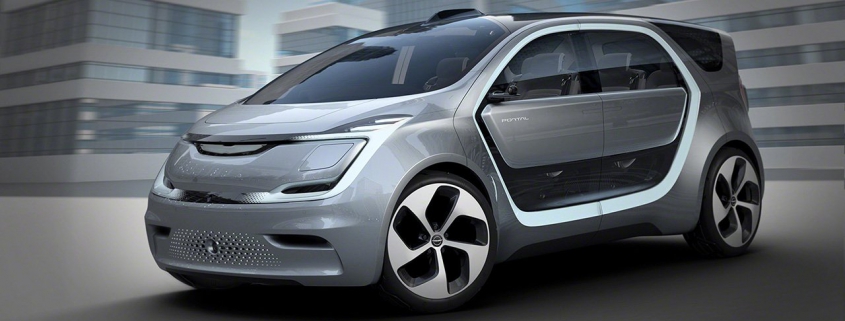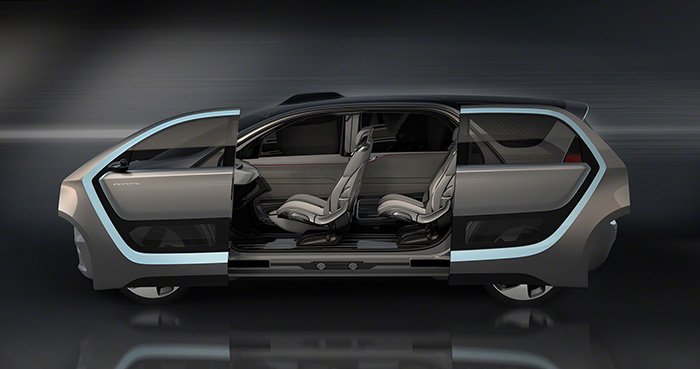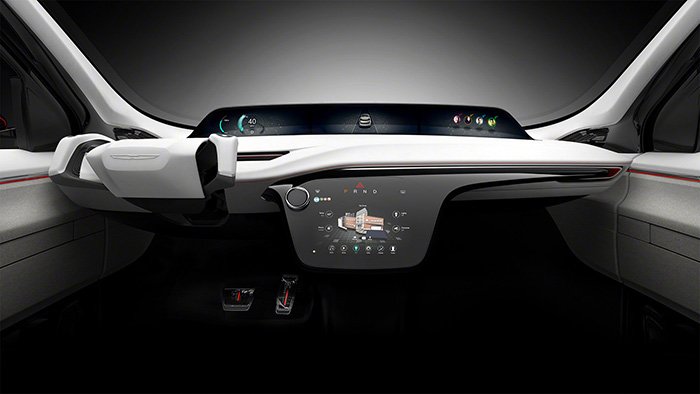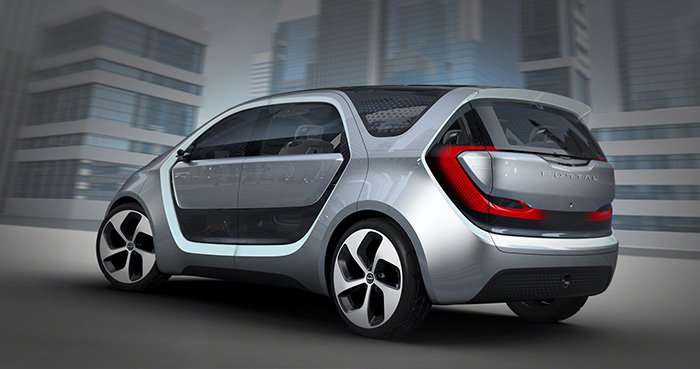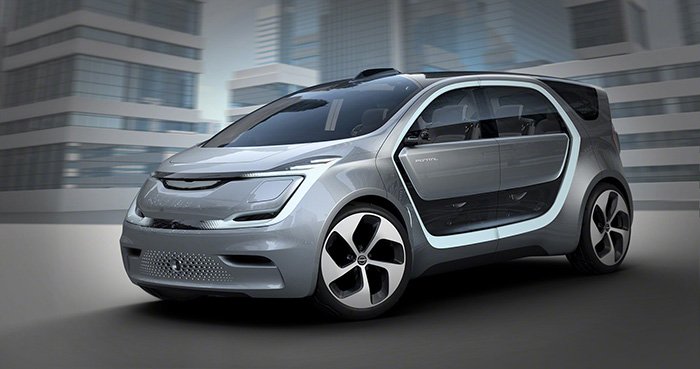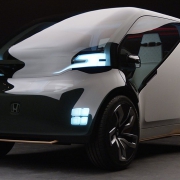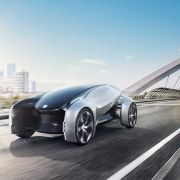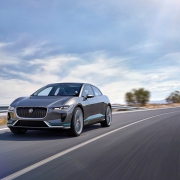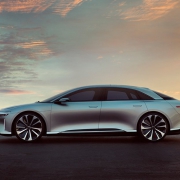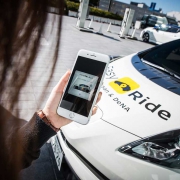Chrysler Portal Concept EV Revealed at CES
The Chrysler Portal concept is an autonomous, electric minivan with 250 miles of range, designed to keep the driver and passengers connected – to each other, to the vehicle and to the surrounding world.
Starting with today’s widespread use of the Internet and social media for communication and information, the FCA User Experience (UX) team, and an internal UX Tiger team from the Panasonic Automotive Advanced Engineering function, jointly picked a blend of emerging and future technologies to engage the next generation of vehicle users.
Tapping the Panasonic Cognitive Infotainment (PCI) platform as the foundation of the UX feature set, the Chrysler User Experience team matched future consumer needs (life, finances and new technology) to those new technology solutions now exhibited in the Portal concept.
“Working together, FCA and Panasonic Automotive are showing a more cognitively enhanced set of technologies that can give drivers and passengers a superior, more accurate, just-in-time in-vehicle experience,” said Tom Gebhardt, President, Panasonic Automotive Systems Company of America.
For members of the millennial generation, the target audience for the Chrysler Portal concept, technology is more than a tool – it’s an integral part of their lives.
The hub of this technology is the mobile phone. The Chrysler Portal concept is engineered to seamlessly detect and connect with passengers’ mobile devices, expanding the social canvas.
[bctt tweet=”Chrysler Portal concept comes w/ facial recognition and voice control / #cars #ev” username=”petervonstamm”]
Recognition and user authentication is the next level of personalization and a primary driving factor for the user experience. Facial recognition and voice biometric technologies work together to provide a seamless personalization experience. As a result, all passengers can set up individual and group settings for an enjoyable, customized experience.
For example, facial recognition tells the Chrysler Portal who is in the vehicle and how to automatically configure preferred settings, such as music, lighting, vehicle temperature, heated or cooled seats, etc. Internet cloud-based technologies, combined with facial and voice recognition, keep those preferred settings in sync should a passenger move to another seat.
Accessing technology inside the vehicle is naturally intuitive using a blend of voice controls with familiar touch controls. With an array of microphones inside the Portal concept, voice control is available to all occupants. Advanced speech software can identify who is speaking to accurately determine an action, such as which display screen to access. Embedded interior and connected portable device cameras also facilitate conversations and interactions.
Facial recognition enables the Chrysler Portal concept to track the driver’s directional gaze
Facial recognition enables the Chrysler Portal concept to track the driver’s directional gaze, as a result, the intensity of the high-mount display screen can automatically dim or increase to help reduce eye strain. If the driver is looking at a specific location on the display and a critical notification occurs, such as an oncoming emergency vehicle, a message pop-up in the area where the driver is looking helps reduce reaction time.
Social media plays a large role in the lives of many Millennials. In the Chrysler Portal concept, sharing content between passengers is as easy as a swipe to the right. A personal tablet or mobile device becomes a community display screen via a docking station in the Chrysler Portal’s headliner, making it easily viewable by second- and third-row passengers. Media such as music, images and videos from personal devices can be shared with a simple upward swipe to the display screen. The community display is ideal for road trips with family and friends. At a glance, infographics show the progress of the vehicle to the trip destination.
The Chrysler Portal concept also takes into consideration each passenger’s media preferences and enables them to contribute to the road trip experience. Using predictive intelligence, passenger preferences can be merged to create an overall community setting that can help the group find destinations and plan the best route, select a restaurant, and play music and videos everyone can enjoy.
Once a route is set, it can be added to the community display so all passengers can monitor the trip’s progress. At the lunch break, passengers can use the technology in the Chrysler Portal concept to order from a quick service restaurant via voice or touchscreen without rolling down the window or leaving the vehicle, a real convenience in inclement weather. If someone is not sure what to order, the system’s intelligence can offer suggestions based on the passenger’s personal settings. With ecommerce, there is no need for cash or a credit card as the payment can be securely transacted from the vehicle while in transit.
Once at the destination, interior and exterior cameras can capture the moment with a selfie, which is then automatically downloaded to everyone’s personal device and can be shared via social media.
During Level 3 autonomous driving, the display communicates the status of the vehicle and the surrounding environment. Should the vehicle come to a stop or perform a quick maneuver, the viewable display makes it clear to all occupants the status of the vehicle.
The Chrysler Portal concept is constantly using Vehicle-to-X (V2X) communication that enables the vehicle to “talk” with the public infrastructure, Internet, and other vehicles via an array of sensors. For example, if an approaching ambulance is out of sight, V2X systems will notify the vehicle that the ambulance is approaching. Graphics on the high-mount display will communicate the oncoming ambulance by simulating its approach and direction, and the audio system will provide cues that the vehicle is approaching.

